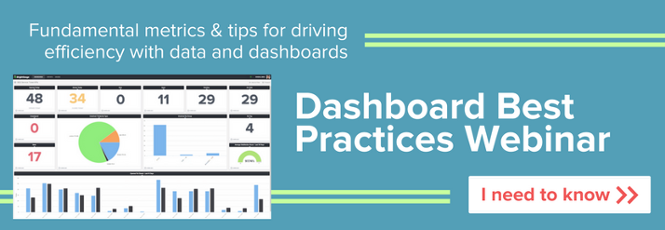Best Practices for Conducting More Effective Performance Reviews

They go by many names: Performance reviews, employee reviews, quarterly reviews, 1:1 meetings, personal reviews, employee assessments—the list goes on and on. Whichever name your organization uses for them, odds are that performance reviews have long been a cornerstone of your employee performance management.
However, employee review time can be a stressful experience for both employees and employers. Employees may be left wondering how their assessments work, while managers may have a difficult time providing objective and actionable feedback without it getting personal.
Why are performance reviews so crucial for managing employees effectively and maximizing results? How can you improve the performance review process?
Why are performance reviews valuable?
When done right, employee performance reviews are a crucial tool for helping both employees and employers identify opportunities for improvement.
For example, is there a particular performance metric that every employee is struggling to meet? That could be an indication of a systemic problem in the company or department. On the other hand, if one employee is consistently missing a performance goal that others are hitting, then they may just need some additional help or training to fix a specific issue that they’re having.
In short, employee reviews are an invaluable tool for identifying opportunities for improvement. When done well, a performance review can give your employees the tools they need to better themselves—and provide some motivation to do so.
However, when employee reviews are not done well, they can easily become a source of dread for employees. Poorly-handled quarterly reviews can feel unfair to employees and even lead to active disengagement amongst the workforce.
5 best practices for conducting more efficient and effective performance reviews
To avoid the potential pitfalls of a poor performance review process, it’s important to follow a few best practices. Here are a few performance review tips to help you conduct better reviews with your own employees:
1. Apply a consistent performance review template for ALL employees in a department
The perception of fairness is paramount for an effective performance review process. To help ensure fairness, it’s important to have a consistent performance review template and criteria for everyone in a given team or department—and to make sure everyone knows what they are!
Creating a performance review template that applies the same criteria to every employee working the same role can help ensure that the process feels fair and consistent. However, it’s also important to make sure that the performance metrics you measure in that template are relevant to your employees and the work they do.
2. Try to highlight both achievements and areas for improvement
Here’s a bit of advice from Forbes, “Don’t just list all the negatives and hope for improvement. It’s important to explain to the employee what they are doing right, as well as what facets they need to develop.” One common problem in the performance review process is that many reviewers focus primarily (or even solely) on what employees did wrong.
While it is important to go over what each employee could do better, it’s just as important to celebrate their “wins” so they feel that their efforts are being recognized and rewarded. Recognizing major achievements and milestones is crucial for engaging employees and showing them what they need to keep doing—just as addressing flaws is important for improving performance.
3. When setting performance review goals, make sure they’re SMART
Quarterly review criteria for employees need to be well-chosen. Asking employees to meet vague or irrelevant goals in the performance review can be extremely counterproductive—if the standards they’re being held to feel arbitrary or unfair, employees can quickly become disengaged with their work.
In many cases, using a goal-setting framework like SMART can be incredibly beneficial. SMART is an acronym for:
- Specific. Goals should be clear and easy to understand while providing a clear course of action or a desirable result.
- Measurable. Goals should have an objective and easy-to-measure value to simplify tracking progress.
- Achievable. Goals should be aggressive, but achievable to keep employees motivated. Impossible goals can lead to employees giving up before they begin.
- Relevant. Goals should be related to an employee’s key role and responsibilities—it isn’t fair to hold software developers responsible for sales numbers or sales reps responsible for a product’s user experience.
- Time-Based. Goals should fall within a specific and realistic time frame that employees can work in. Ideally, the time allotted for a goal should be long enough to allow for progress towards the goal without being too short.
For example, a sales team member might have a goal to close 20 deals per month or to make 40 sales calls in a day. The specific numbers here give the employee a specific goal to work towards in their sales activities, these goals can be easily measured, they are relatively simple to achieve, relevant to their primary job role (selling stuff), and have a set time frame to be achieved that isn’t so long that the goal becomes some distant concern.
4. Create a detailed performance improvement plan with specific steps
It isn’t enough to tell a struggling employee to “just do better” when they fail to meet performance goals. If Bob from the service center knows he’s supposed to have an average time-to-resolution of five minutes for customer calls, but it takes him at least 10 for each call, he’s already aware that he needs to “do better.”
It’s important to recognize the underlying issues that cause poor performance. For example, is Bob being tasked to address particularly complicated customer issues? Is he going above and beyond to provide a solution for customers that keeps them satisfied? Is the whole service department struggling to meet that five-minute goal (indicating that it needs to be revised)?
Investigating the causes of poor performance may require more time and effort, but it will help produce better results and employee engagement. Giving employees a detailed performance improvement plan (PIP) or making necessary changes to company processes will do more to increase performance in the long term than simply telling people to do better without giving them a clear-cut way to do so.
5. Give employees a chance to provide their own feedback
Performance reviews shouldn’t be a one-sided interaction. There may be issues that are keeping employees from realizing their full potential. However, without the ability to voice their concerns, employees may never bring these problems to your attention. If you don’t know about a systemic problem, then you can’t fix it!
So, it’s important to provide employees with an opportunity to provide feedback about their work environment, challenges they face on the job, and more. It’s also important to enforce an expectation of honest and open communication because many employees may simply assume that their comments and concerns won’t really be addressed (or they may be punished somehow for sharing them), causing them to not provide feedback when given the chance.
You can help encourage employees to provide feedback by actively showcasing examples of when feedback was used to make change within your organization, or to even provide completely anonymous feedback channels, like a suggestion box, and highlight the best suggestions from time to time without calling out any names (even if you have an inkling of who provided the feedback) or ridiculing the suggestion. If you act on these suggestions, it can go a long way towards building trust and engagement amongst your team!
Transform your employee reviews with BrightGauge!
So, how can you collect and organize the data you need to conduct efficient and effective performance reviews? Many business leaders choose to use specialized performance review software that helps them keep track of their employee performance metrics during their 1:1 meetings.
One tool that many leaders use during their performance reviews is BrightGauge (specifically, the Dashboards feature). With BrightGauge’s reports and dashboards, managers can pull in data from their other performance management and monitoring tools such as ConnectWise, Autotask, QuickBooks, Customer Thermometer, and many others. All of this data can be put into a single convenient view that’s easy to reference during a performance review.
Outside of performance reviews, the BrightGauge dashboard will update in real time so team leaders can actively monitor performance outside of their quarterly reviews and provide timely feedback—or recognize major achievements and milestones when they happen.
Additionally, managers can make these dashboards visible to team members. This can help encourage some healthy competition between team members to see who can achieve the best scores for certain metrics. This keeps employees motivated to achieve goals and drives long-term results.
Another useful feature of BrightGauge is our proprietary goals system. This tool makes it easy to set and track employee goals on an individual level—increasing accountability and helping employees know which areas they need to improve upon. This can be immensely useful for keeping employees on task and improving performance across the whole team.
Are you ready to make your performance reviews more productive? Learn more about how BrightGauge can help you improve your employee performance review process today by scheduling a live one-on-one demo now!
Free MSA Template
Whether you’re planning your first managed services agreement, or you’re ready to overhaul your existing version, we've got you covered!



